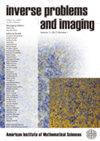超声图像分析中基于加权面积约束的乳腺病变分割
IF 1.5
4区 数学
Q2 MATHEMATICS, APPLIED
引用次数: 2
摘要
由于斑点噪声、低对比度和模糊的边界,乳房超声分割在实践中是一项具有挑战性的任务。虽然目前已经有许多方法来解决这一问题,但由于分割区域的不确定性,大多数方法在没有专业领域知识的情况下无法得到满意的结果。在本文中,我们提出了一种新的乳房超声图像分割方法,该方法结合了加权面积约束,使用水平集表示。具体而言,我们首先使用散斑减小各向异性扩散滤波器来抑制散斑噪声,并对其应用Grabcut来提供初始分割结果。为了改进生成的图像掩模,我们提出了一种基于加权面积约束的水平集公式(WACLSF)来提取更准确的肿瘤边界。本文的主要贡献是为分类器的概率分数的正则化引入了一个简单的非线性约束,它可以加速零水平集移动到期望边界的运动。与其他最先进的方法(如FCN-AlexNet和U-Net)相比,我们提出的基于waclsf的策略在视觉视图和精度方面具有优势。本文章由计算机程序翻译,如有差异,请以英文原文为准。
Weighted area constraints-based breast lesion segmentation in ultrasound image analysis
Breast ultrasound segmentation is a challenging task in practice due to speckle noise, low contrast and blurry boundaries. Although numerous methods have been developed to solve this problem, most of them can not produce a satisfying result due to uncertainty of the segmented region without specialized domain knowledge. In this paper, we propose a novel breast ultrasound image segmentation method that incorporates weighted area constraints using level set representations. Specifically, we first use speckle reducing anisotropic diffusion filter to suppress speckle noise, and apply the Grabcut on them to provide an initial segmentation result. In order to refine the resulting image mask, we propose a weighted area constraints-based level set formulation (WACLSF) to extract a more accurate tumor boundary. The major contribution of this paper is the introduction of a simple nonlinear constraint for the regularization of probability scores from a classifier, which can speed up the motion of zero level set to move to a desired boundary. Comparisons with other state-of-the-art methods, such as FCN-AlexNet and U-Net, show the advantages of our proposed WACLSF-based strategy in terms of visual view and accuracy.
求助全文
通过发布文献求助,成功后即可免费获取论文全文。
去求助
来源期刊

Inverse Problems and Imaging
数学-物理:数学物理
CiteScore
2.50
自引率
0.00%
发文量
55
审稿时长
>12 weeks
期刊介绍:
Inverse Problems and Imaging publishes research articles of the highest quality that employ innovative mathematical and modeling techniques to study inverse and imaging problems arising in engineering and other sciences. Every published paper has a strong mathematical orientation employing methods from such areas as control theory, discrete mathematics, differential geometry, harmonic analysis, functional analysis, integral geometry, mathematical physics, numerical analysis, optimization, partial differential equations, and stochastic and statistical methods. The field of applications includes medical and other imaging, nondestructive testing, geophysical prospection and remote sensing as well as image analysis and image processing.
This journal is committed to recording important new results in its field and will maintain the highest standards of innovation and quality. To be published in this journal, a paper must be correct, novel, nontrivial and of interest to a substantial number of researchers and readers.
 求助内容:
求助内容: 应助结果提醒方式:
应助结果提醒方式:


